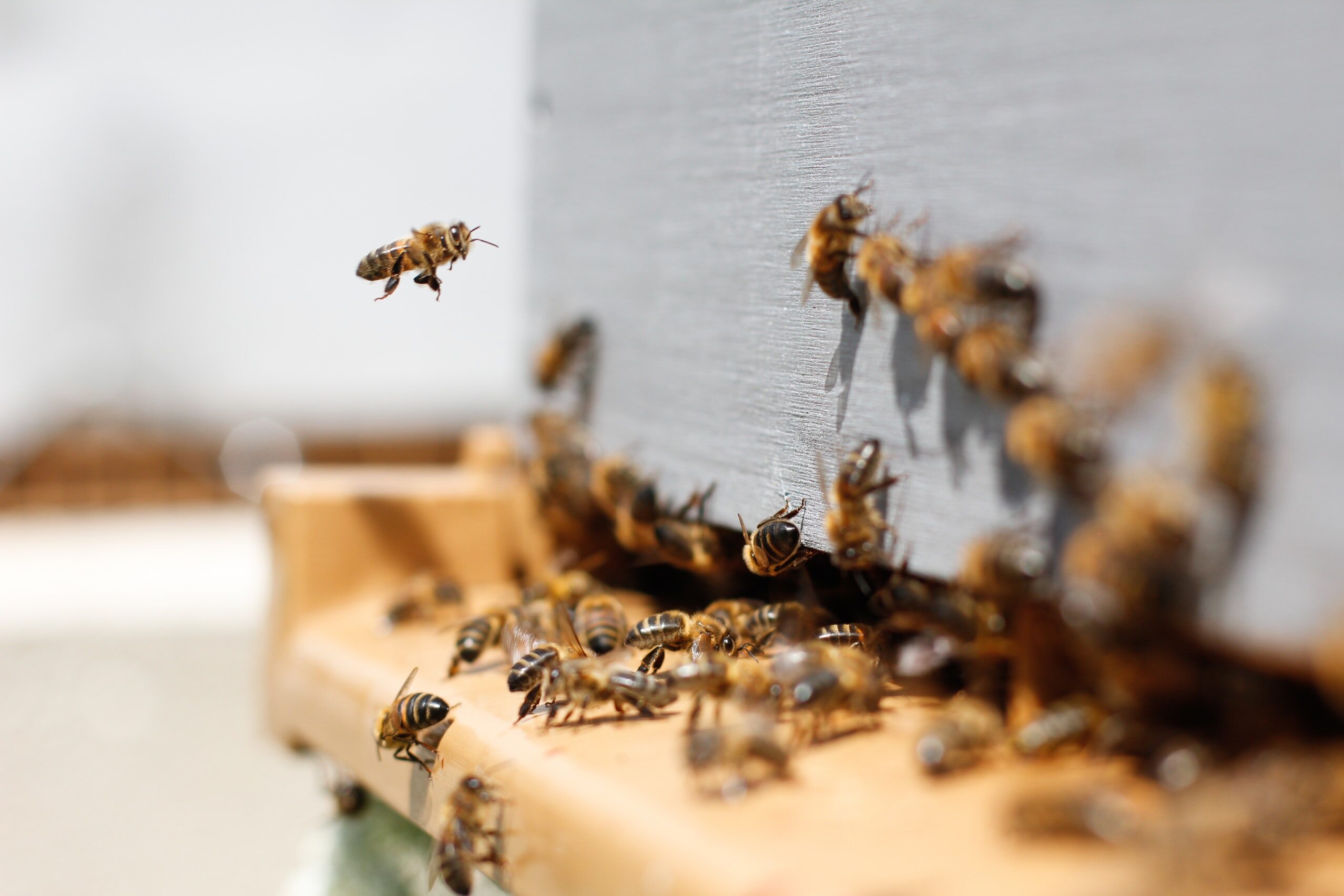We didn’t know this about bees. A breakthrough discovery by Polish scientists

The characteristic dance and secretion of pheromones are not the only ways bees communicate. In some situations, e.g. before the drones leave the hive or when the mother lays too few eggs, bees signal each other by vibrating their wings – research by Polish scientists shows.
Scientists from the University of Agriculture in Krakow take a very close look at the lives of bees – they observe them in observation hives with glass walls, using a camera recording 3,000 frames per second (in such a film the insects move 100 times slower than in a regular film).
– Thanks to this, we managed to observe bee behaviors that have never been observed before. There is a good chance that we will understand them – says bee researcher Prof. in an interview with PAP. Adam Tofilski from UR.
For now, this is basic research, but the scientist hopes that one day it will be possible, for example, to automatically detect when bees are getting ready to swarm. This would make life easier for beekeepers, for whom swarming usually means losses.
Communication creates community
– Bees live in societies consisting of a queen and thousands of workers. In such a bee family, communication and information exchange are needed to make work more effective – explains Prof. Tofilski.
Several dozen years ago, it was discovered that bees communicate using the so-called swing dance. For a distance of several centimeters, the bee runs around the comb, waving its abdomen, and then turns back and repeats this behavior. These dancing conversations are mainly about food. “Bees communicate information about the direction and distance they need to fly to reach food” – explains the entomologist. He points out that this is the only animal “language” that has been understood so well so far.
Another way of transmitting information in the hive is through scents – pheromones. For example, the mother bee secretes the so-called mother substance. If the smell disappears, it is a signal to the workers that they should raise a substitute mother from one of the larvae. Other pheromones – the so-called alarm pheromones – bees release them when they are threatened.
The bees shake each other
It has long been known that bees communicate using vibrations. For example, you can see that one bee sometimes grabs another bee and shakes it. “But when we observed it in slow motion, we noticed that it was accompanied by small movements of the wings,” says prof. Tofilski. He adds that he and Dr. Sylwia Łopuch were the first in the world to record it on film.
As he describes, sometimes these signals can be heard as buzzing sounds. However, without a super-fast camera, it is impossible to be sure which bee made the sound.
When scientists started looking at different moments in the life of a hive, it turned out that such vibrations occur in different contexts. Thus, wing vibrations can be observed in young mother bees preparing for their mating flight. Workers may also use vibrations near the drones when they drive them out of the hive in late summer. Drones also “buzz” when they are about to fly out of the nest (unlike drones too young to go on a mating flight). Such wing flaps are also an element of every bee dance. Bees also move their wings in contact with their mother. The so-called the mother’s entourage may signal her to lay more eggs through wing vibrations. Prof. Tofilski and Dr. Sylwia Łopuch checked this by taking bee eggs and larvae from the hive. After this event, the mother’s entourage in her environment more often transmitted vibration signals to the mother, as if urging her to make up for the losses. The research results are still awaiting publication.
It is also known that bees transmit signals to each other using vibrations when preparing for swarming. During this time, worker bees build queen cells in which new queen bees develop, and the old queen and part of the family fly away from the nest. As a consequence of swarming, honey production in the hive decreases. Beekeepers try to prevent the swarm from leaving – by destroying queen cells or dividing the bee family into two parts. However, in order not to miss the swarms, they must systematically check the hives.
Prof. Tofilski hopes that research on vibrations in bees will allow for prediction of swarming. Then, it will be possible to use a system of microphones installed in the hive to warn about the approaching swarm. So maybe one day there will be a program that analyzes sounds from the hive and warns beekeepers not to miss the swarm. However, much further research is needed. “It is difficult to study the swarm because a bee colony usually swarms only once a year,” the scientist points out.
The signals emitted by bees most often consist of a series of pulses, each of which includes several to several dozen wing movements. Only in mothers preparing for mating flights are these pulses much longer. Bees living in the dark do not see or hear these wing movements, but rather feel the vibrations that occur.
The researcher points out that most of such signals transmitted in the hive are much simpler than bee dances, which still carry a symbolic message. (PAP)






